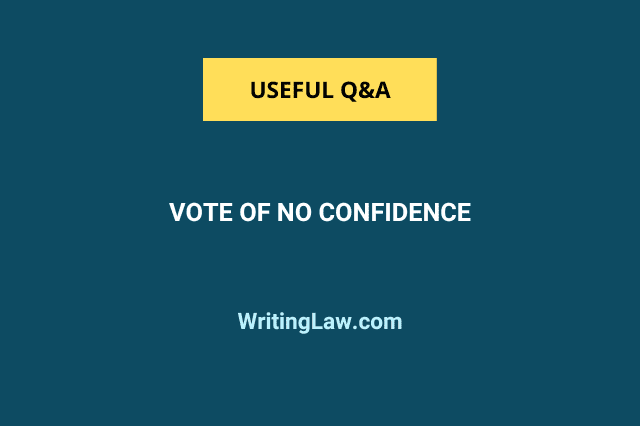
In this article, you will read about the vote of no confidence in the Indian parliament, which is a parliamentary procedure that allows the opposition to challenge the ruling government’s legitimacy.
What Is a Vote of No Confidence?
A vote of no confidence is a parliamentary procedure in which members of the legislature vote on whether they have confidence in the current government or not. In the Indian Parliament, a no-confidence motion can be initiated by any member of the Lok Sabha (the lower House of Parliament) against the Council of Ministers (the executive branch of the government).
Related: What Are Parliamentary Motion and Its 10 Types in India?
How Is a No Confidence Motion Initiated?
If the Speaker of the Lok Sabha accepts the no-confidence motion, it is debated, and a vote is held. If a majority of the members present and voting in the Lok Sabha vote in favour of the motion, the government is considered to have lost the confidence of the House and is expected to resign.
The Importance of the Vote of No Confidence in India
A vote of no confidence is a significant political event in India and can lead to a change in government or the calling of new elections. However, such a motion is not very common and is usually only used in cases of serious political crisis or when the ruling party’s majority (government) in the Lok Sabha is uncertain.
In the Indian parliamentary system, the vote of no confidence is considered an important mechanism to ensure the accountability of the government to the parliament. It provides a platform for the opposition parties to express their dissatisfaction with the policies and performance of the government and to call for its removal.
The Debate and Voting Process for a No Confidence Motion
To initiate a no-confidence motion, a member of the Lok Sabha must give written notice of his intention to the Speaker of the House. The notice must be signed by at least 50 members of the House. Once the Speaker receives the notice, he or she will examine it to ensure that it meets the procedural requirements and then admit it for debate.
During the debate on the motion, the Prime Minister or a minister designated by him or her will defend the government’s position and policies. The opposition parties will have the opportunity to criticize the government and present their arguments for why it should be removed. After the debate, a vote is taken, and a simple majority of the members present and voting is required to pass the motion.
Consequences of a Failed Vote of No Confidence
If the government loses the vote of no confidence, the Prime Minister must tender his or her resignation to the President. The President will then appoint a new Prime Minister, who will form a new government. However, if no party or coalition is able to form a government with a majority, new elections may be called.
Conclusion
A vote of no confidence is a parliamentary procedure in which the members of the Lok Sabha in the Indian parliament can challenge the legitimacy of the Council of Ministers. The Speaker of the House must accept the no-confidence motion, and if a majority of the members present and voting vote in favour of it, the government is expected to resign.
This mechanism is considered an important tool for ensuring the accountability of the government to the parliament and provides a platform for opposition parties to express their dissatisfaction with the government’s policies and performance.
While it is not very common, a vote of no confidence can lead to significant political changes and new elections.
Read Next:
1. What Are the Powers and Functions of the Indian Parliament?
2. Is the Indian Parliament Supreme or the Judiciary (Supreme Court)?
3. The Withering State of Indian Parliamentary Democracy
- What Is the Burden of Proof Under the PMLA? - 18th April 2024
- Ranjit D Udeshi vs State of Maharashtra – Case Explained - 11th April 2024
- What Is Proceeds of Crime Under PMLA (With Case Laws) - 7th April 2024







